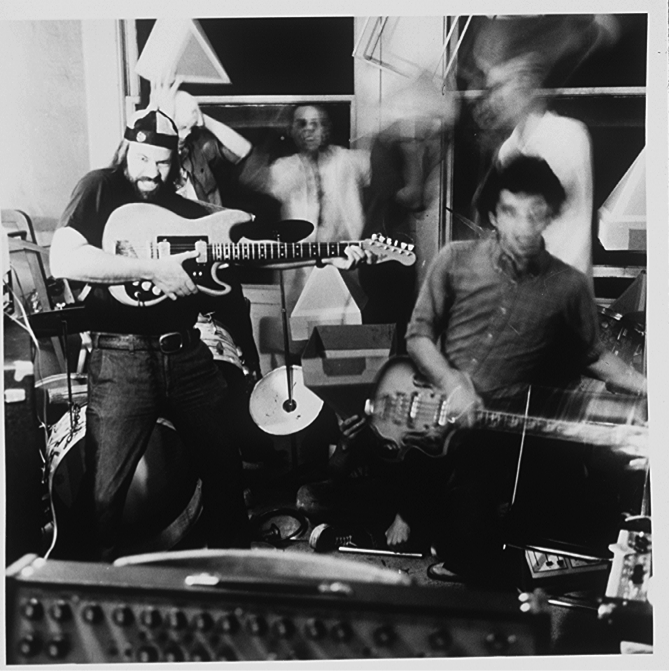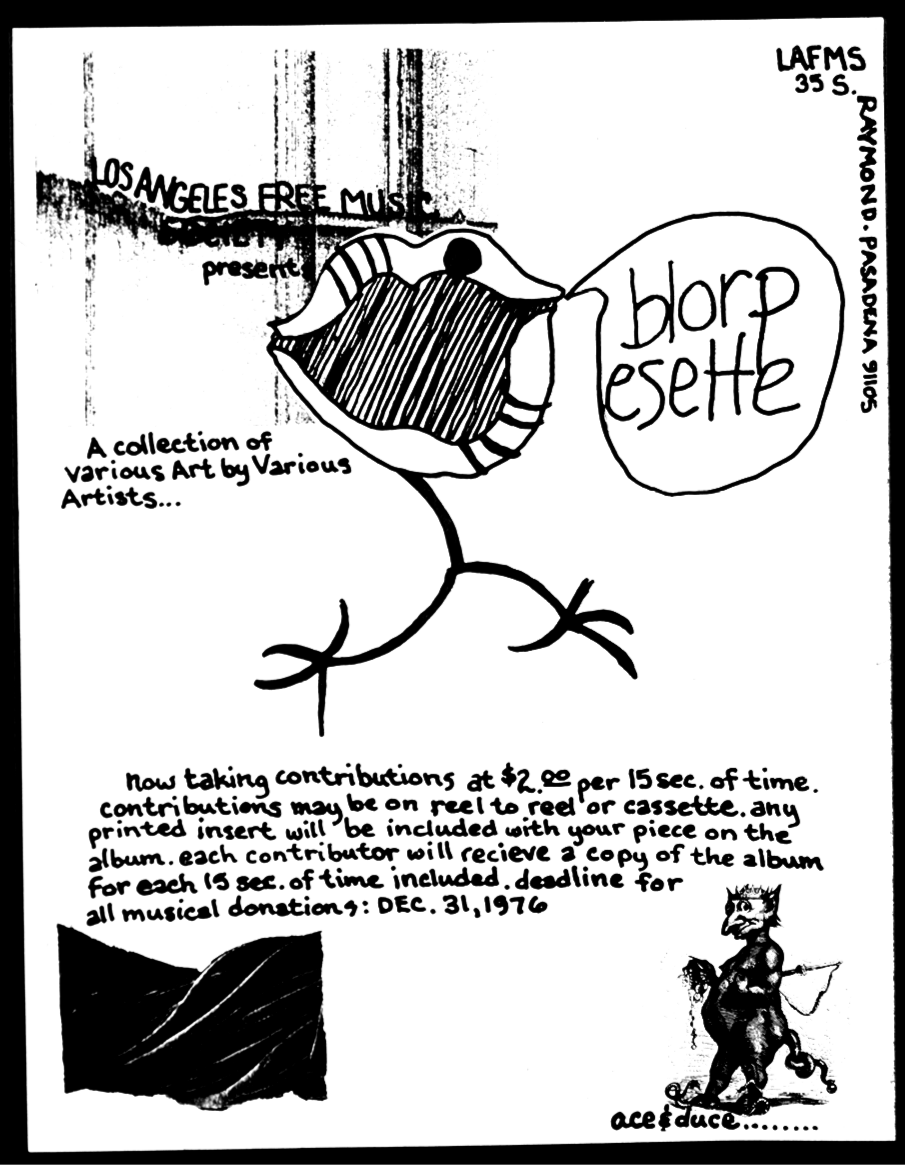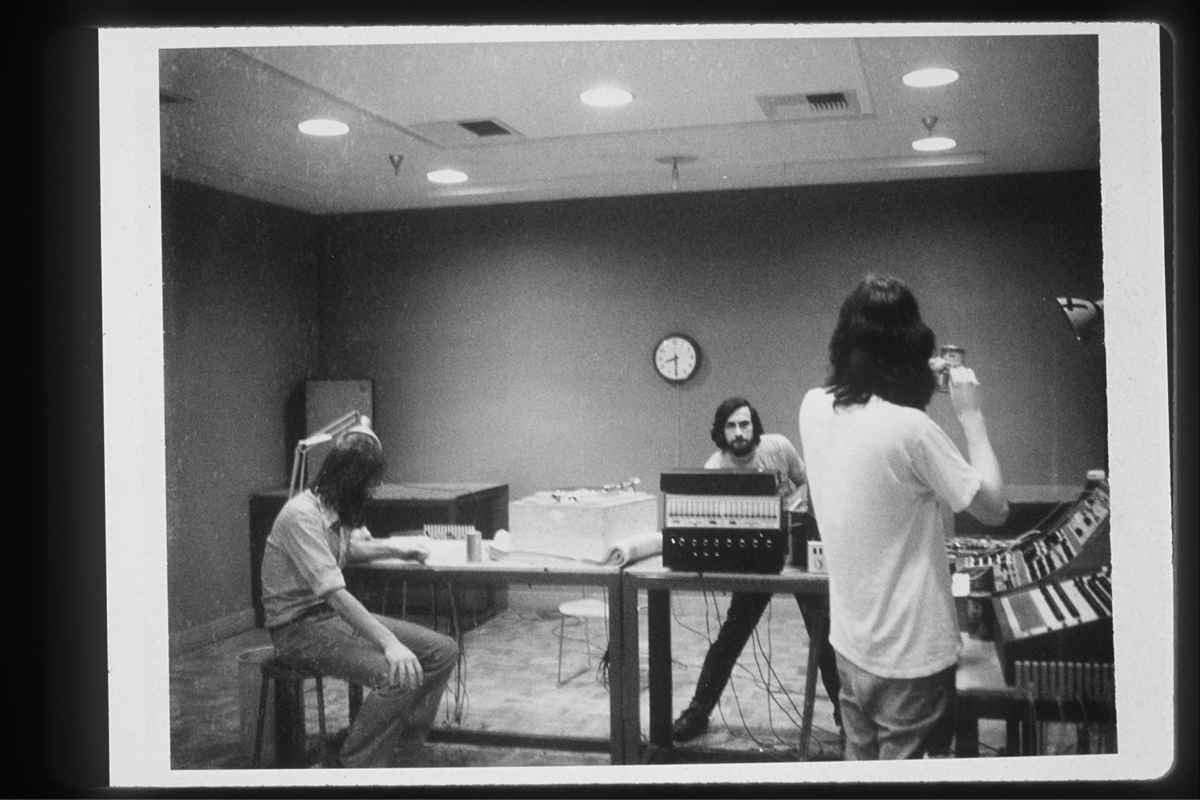
“Free Minds and Ears”: The Early Days of the Los Angeles Free Music Society
What is now known within noise and avant-garde circles as the Los Angeles Free Music Society didn’t start out with that name, a moniker suggesting legitimacy, seriousness, maybe funding from a grant. The name began as a joke in an attempt to give the impression of those qualities. In 1974, Pasadena-based musicians Joe Potts, Rick Potts, and Chip Chapman were working under the name Le Forte Four, crafting sound art with improvisation, tape experiments, and sampling. Wanting their submission to Norway’s Høvikkoden Electronic Music Festival to be taken seriously, they applied as the East Los Angeles Free Music Society. The name change didn’t help. Their rejection letter stated, “Free minds and ears are one thing, but what about aesthetics?”
The Potts brothers and Chapman shared this anecdote with their peers, all fellow musicians as part of a loose noise collective centered at Poo-Bah Records in Pasadena in the mid-seventies. After they all laughed about the tale, Tom Recchion in particular took to it, suggesting the collective actually work under the Los Angeles Free Music Society (LAFMS) name. Joe Potts described how the joke grew into a sort of mission, becoming “a means to unify several independent circles of mutual friends who were all experimenting with sound from a similar (non-)aesthetic viewpoint.” They were spurred on by the innovations of new music, avant-rock, and free jazz, influences spanning John Cage, Frank Zappa, Captain Beefheart, Evan Parker, and Derek Bailey, and they would go on to inspire groups like Sonic Youth and Throbbing Gristle.
Participants in the LAFMS took varying DIY approaches to sound art and improvisation, some blasting speakers with their volume and others deliberately creating quiet pieces. Regardless, LAFMS groups would often get kicked out of venues. Frederik Nilsen recalled attending a performance at the Cathay de Grande in Hollywood and said, “It wasn’t that loud. It was just noise. Real noise.”
The groups that contributed to LAFMS, including Nilsen, the Doo-Dooettes, Smegma, AIRWAY, Ace & Duce, Dennis Duck, Richard Synder, and Billy Bishop, conducted an eclectic array of sonic experiments using a range of traditional and unconventional instruments. Enlisting homemade instruments, musical toys for children, and industrial materials, techniques included putting hinges on guitar necks, driving nails and springs into pieces of wood, and affixing bassoon reeds to trumpets. Recchion said, “I always felt like Evel Knievel. I could jump off any building and try to test something out.”

These fresh approaches to sound were captured on recordings, put out as cassettes and vinyl in limited editions. In 1976, they released the compilation I.D. Art, which collected contributions from any artist able to pay two dollars for a fifteen-minute time slot. The LAFMS continued in 1978 and 1980 with the Blorp Esette compilations, and sent out mail-art journals as well.

However, despite the collective’s robust performing and recording output, they failed to achieve legitimacy in the seventies compared to avant-garde counterparts elsewhere around the globe. Nilsen has since contemplated on how Los Angeles as a location different from other centers of the avant-garde. He told The Guardian, “There was a paradigm shift of some sort where there was all this experimental activity happening around the planet. But in LA, we were so isolated. It wasn’t like there was a support system like in Europe or London, or NY. We were kind of off on our own.”
This lack of support went beyond getting kicked out of venues. Rick Potts described how they were viewed with disdain by the electronic music students at Cal Arts, whose electronic music studio he would use along with his brother Joe and Chapman, who was studying with Morton Subotnick there for a period. “The serious electronic music majors hated it because they were sort of inventing ambient music at the time,” he said. “Our stuff was way too bombastic.”

In this statement, Potts acknowledged this divide between them and the students, the Cal Arts music majors deemed as serious whereas the LAFMS members were not, indicative of an ongoing separation between DIY and academic approaches to sound art and avant-garde music that historically grants legitimacy and legacy to the latter approach. Recchion stated to Frieze that, “I had in my mind a connection to sound that would be like performance art. It felt no different to me. But it also didn’t feel that different to what a classical composer was doing who was exploring new music. So why couldn’t those things co-exist as a valid methodology for making work?”
As time has passed however, the LAFMS has continued on, despite slowing down after the early eighties. In 2010, they held a three-day festival in London with performances, workshops, and panels, and the collective was celebrated in 2012 with the exhibition, Beneath the Valley of the Lowest Form of Music, which was documented with a 2016 box set. Their influence remains palpable, and as always, the possibilities for sound are expansive, creating an exhilarating unknown for what the collective’s future may bring.
In the Shop
Take a look at LAFMS releases we have in stock, as well as LAFMS-adjacent records.
Airway – Live At Zebulon – $9
Sissy Spacek / Smegma – Ballast LP – $20
V/A – Blorp Esette Volume One – $29
V/A – I.d. Art #2 – $29
V/A – Sound – $29
Resources
The Los Angeles Free Music Society website
Robert Barry, “The Rest Was Noise,” Frieze (2017)
Doug Harvey, “Under the Radar: Writing Noise,” Artillery (2013)
“‘The Music Is Free, But You Have to Pay for the Plastic, Paper, Ink, Glue and Stamps,’” Table of the Elements (2020)
Holly Myers, “Art Review: Los Angeles Free Music Society at the Box,” Los Angeles Times (2012)
Rolf Semprebon, “LAFMS Biography,” AllMusic
Matt Stromberg, “Los Angeles Free Music Society: The West Coast’s Own Radiophonic Workshop,” The Guardian (2016)
– Hannah Blanchette
February 26, 2023 | Blog